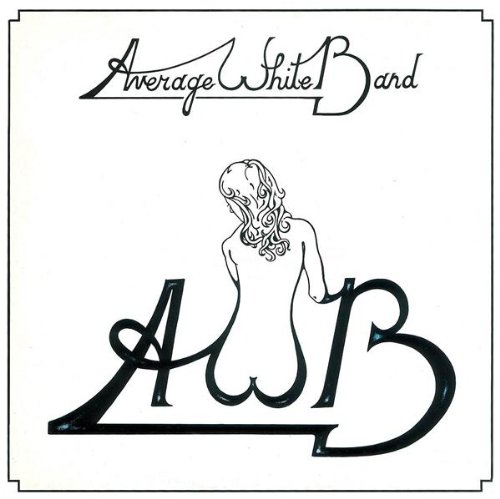What are you listening to and WHY might anyone be interested? (Vol. XIII)
Posted by: Richard Dane on 01 January 2017
2017 has arrived today, so time to start this thread afresh.
Last year's thread can be found here;
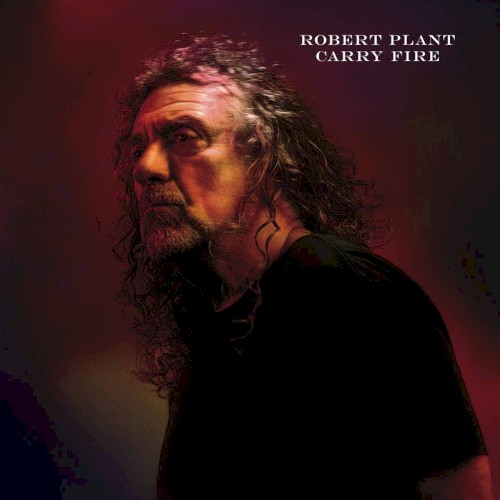
Tidal. Robert Plant - Carry Fire
Now Playing......

Jack Johnson - In Between Dreams
A posting from NIGELB the other day had me put this album in my queue, here goes.....

Perahia/Haitink/Concertgebouw: Beethoven Piano Concerto No.1 - '85 rec.
This set demonstrates an excellent example of power and grace and it still remains as one of my reference for Op.15.
I love the newly (then) discovered beethoven's cadenza, too!
Save
Save

Herbie Hancock: Man-child & Head hunters.
I love his funky era tunes. I have discovered him via Man-child's groovy first tune. Then I explored his Blue Note years. Kept it up till say till early 80s. Lost interest when he got into all synth music. ( exception is dis is da drum in the 90s ) I loosely have been following his output through the years albeit I no longer buy every album he puts out but when I saw him touring again with his older funky stuff, I decided to attend the concert ( he happens to be in town this weekend! )
I am curious to see if he's bringing his Fazioli piano.
He's 77 this year!
'Hang up your Hangups' was my first encounter with Hancock's music. I first heard it at a local record store and asked the clerk what this was and bought the album.
I am pretty sure Beethoven would approve his funky grooves. ![]()
Save
Now Playing......
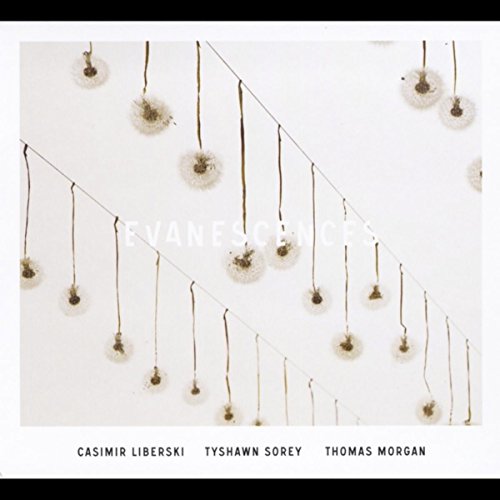
Casimir Liberski Trio - Evanescences (featuring: Tyshawn Sorey and Thomas Mogan
Casimir Liberski (piano), Tyshawn Sorey (drums) and Thomas Mogan (bass)
Something a little different to close out the evening, jazz improvisation.......
After the dinner guests had left and the cleaning that followed:

Tony2011 posted:dave marshall posted:
Average White Band - AWB.
Playing now .................... some album this, which went straight to number one in The States ...................... not a bad effort for a wee
band fae North of the Border, .................... some home grown Jock Fonk, ken.
Great band, although, with a name like that, we would probably have had a little backlash in this PC world we live in today.
Very true, though when they first toured The States, on the back of their chart topping album, the initial reaction of the, largely black, funk audience was "Say what?", when confronted by a band of white guys.
Thankfully, once the groove got underway, they were usually cheered to the rafters. ![]()

Bert Schurink posted:
Now with musicweb review...
Ludwig van BEETHOVEN (1770-1827)
The Complete String Quartets
Belcea Quartet (Corina Belcea (violin); Axel Schacher (violin); Krzysztof Chorzelski (viola); Antoine Lederlin (cello))
rec. 2011/2012, The Britten Studio, Snape, Suffolk, United Kingdom. DDD
ALPHA 262 [8 CDs: 610:12]
Of complete cycles of the Beethoven string quartets in the current catalogue there are over two dozen. In the first few bars of the first, allegro con brio, movement of the sixth Opus 18 quartet, which begins this cycle, the members of the Belcea Quartet make it quietly plain what their approach is: a very contemporary one. One which aims to push no one flavour of interpretation, nor one which risks emphasising their playing in ways that could fragment Beethoven’s achievement. Yet one which successfully exposes each individual work for the wonder it is.
Their playing prizes spontaneity. Tempi spring; they surprise. Phrasing delights and highlights the enormous variety of Beethoven’s conception of and confidence in the medium… some extremes are reached, such as the tortoise shuffling home at the end of the next, adagio, movement in Opus 18/6 [CD.1 tr.2] and the hare racing home at the end of the allegro agitato movement of Opus 95 [CD.3 tr.4].
The Belceas’ performance never eschews ‘realism’ … you can hear the mechanics of the strings and the ‘breathiness’ of the group focused on the progress of the music; though this is never intrusive - just very natural. They observe dynamics as strictly as they use Beethoven’s attention to ‘volume’ to convey range and long perspectives. There are many times when you feel they are encountering the music for the first time, are actually discovering its melody, almost unaware exactly of where it is going to lead - although very sure that it is leading somewhere. Indeed, one of the merits of this cycle is that the players have a superb grasp of direction; they are able to articulate, quite without fuss, the long lines of Beethoven’s melodic development - particularly when these are song-like, lyrical and wistful. Even in the slow movements.
Unlike recordings from some of the older classics such as by the Quartetto Italiano (Philips 454062 ), the Belceas rarely suggest complete inevitability. Rather, that we as listeners would be well advised to put ourselves into their hands because - if anyone can tease out from the music an essence acceptable to all present (though not necessarily past and future) listeners - these players can. And this set is where they are doing it.
This eight CD set on Alpha is a reissue of individual CDs and sets originally released on Zig-Zag Territoires (ZZT344) from live performances given in December 2011 and March, May, October and December 2012 at the Britten Studio, Snape, Suffolk. No attempt has been made to recreate a concert atmosphere; there is no applause, ambience or sense of occasion. Although relatively close miking means that we know these to be live, real musicians - as opposed to… paid interpreters.
But, as said, there is ample projection of the Belceas’ presence and engagement with individual movements and quartets as well - thankfully - as there is respect and reverence for the cycle as a cornerstone of the repertoire. This is not an easy balance to strike: use awe to convey the music’s greatness and it may become maudlin and over-precious. Approach it in a way that’s too businesslike and it may sound perfunctory. The Belceas strike an excellent balance - one which may remind those listeners who know the group’s discography of their Schubert Quintet and ‘Death and the Maiden’ CD [Warner Classics 67025], their Bartók cycle [Warner Classics 94400] and the three Britten Quartets [Emi Classics 57968], which introduced the group to many for the first time.
The Belcea Quartet was formed 1994 at the Royal College of Music in London. Although based in Britain, first violin Corina Belcea is Romanian and violist Krzysztof Chorzelski Polish. Their mentors were members of the Alban Berg and Amadeus Quartets. It’s in those traditions which the Belceas sit firmly and noticeably, and from which they clearly benefit immensely: dignity and intensity are nicely balanced in the service of exposing the music fully with just the right amount of colour.
To this cycle, the Belcea’s devoted a whole year, immersing themselves in the immensity of the music. In the preface which they provide to the booklet which comes with the set, they describe how the cycle became their consuming passion during that time and how the completeness of Beethoven’s conception came to form and embody (aspects of) their musical creed.
Although they nowhere say as much, it is plain that they managed to meld their own somewhat disparate make-up and the (geographical and cultural) origins of their members with an open-mindedness consciously to take advantage of those heritages. This surely helps the musicians to see inside those aspects of some of Beethoven’s most intimate writing in order to understand its universality.
The usual ways to group the 16 quartets are chronologically, or by selecting one each from the ‘early’, ‘middle’ and ‘late’ periods for most of a set’s CDs. This one from the Belceas takes a different approach (see the track listing). It’s apparently random - although it moves generally towards the later quartets. Each CD has only two works, except for the fifth, which also contains the Grosse Fuge, Opus 133, paired with the third and fifth from Opus 18. This approach sponsors freshness and may aid our appreciation of the breadth of Beethoven’s achievement.
To opt for a purely chronological sequence runs the risk of suggesting that with greater maturity Beethoven achieved greater worth. Happily the Belceas lavish as much care on the earliest works in the cycle as on the later ones… listen to the meticulous attention to dynamic and pace in, say, the allegretto fifth movement of the Opus 8 [CD.1 tr.5], where the players know that there is always something about to happen and want us to experience tautness and release as much as to be stunned by the generosity of spirit in the later works. Perhaps the oddest decision is to have sequenced the Razumovskys 3 - 1 - 2 (on CD.s 2, 6); although you are not obliged to play the CDs (or their tracks) in the order in which they are numbered, of course.
Yet what follows immediately, the E Flat Major twelfth [CD.1 tr.s 6-9], is never for a second pompous, overblown or ‘lofty’. The Belceas’ phrasing makes it plain that they know that Beethoven must himself have known what was ‘special’ in every way imaginable (and many ways unimaginable) about the work… the textual contrasts; the colours; the pushing to their limits (then) of tonality and melodic invention; and the depth of expression which had developed less than a century earlier from a quite humble genre. Their playing never tries to add its own density or dissection to the music. Nor does any individual’s playing ever step out of the Quartet’s sense of togetherness. Yes, we are aware of each instrument. But the balance struck between show and uniformity is excellent.
In some of the late quartets’ sublime slow movements the Belceas, it has to be said, go as far as to adopt an approach akin to a therapist’s: they almost ask us listeners to make up their own minds, rather than providing answers. These slow movements are generally played lovingly and with great gentleness here, rather than with the sort of insistence and solemnity typical of other recommended accounts, such as those by the Borodin, Busch, Emerson, Endillion or Takács Quartets. Those reveal something quite different.
One advantage to this approach of the Belceas, where suspension is as important as exposition, is that tonic resolution - such as that towards the end of the adagio second movement of Opus 127 [CD.1 tr. 7] - sounds all the more inevitable without being in any way forced. The technique of the Belceas is admirable. Such faster passages as those on which the allegro molto of the second Opus 18 relies for its sense of conclusion [CD.2 tr.4] are played in such a way that the close seems a worthwhile point to have reached in its own right, rather than as part of a convention where fast is last.
It’s also instructive to observe that way in which the Belceas match tension and (always sober) intensity with Beethoven’s confident refinement, extension and embellishment of the new medium invented by Haydn a few generations earlier at most. Although Beethoven made it his own, he never forget - these performances remind us - the tradition which gave them their strength… the consonances which only strings can celebrate; (Viennese) humour; transparency and clarity of melody and harmony; and the meaning of changes in dynamic behind which no-one can hide anything; an almost primal sense that such a combination as the instruments of the string quartet’s lies at the very essence of musical invention.
Another quality which comes naturally to the Belceas’ playing here is sympathy. In slow movements in particular. Listen to the sensitivity and gentleness with which they caress the seemingly unending twists of the andante of the second Razumovsky [CD.2 tr.6]. And yet observe the ma non troppo of Op.131’s opening adagio [CD.3 tr.5]. Again, the fact that theirs is an interpretation for our time is evident: these are surely romantic performances in that the players relate to Beethoven’s feeling, sense of regret, joy, sadness, reserve or despair, hope and elation. Perhaps most importantly the composer shows us that feelings mean something over time and so put the individual at the centre of the music. Yet you know that - at the same time - the performers never fully lose themselves in the emotions… in the way that, say, the Busch Quartet does.
Just as impressive are the faster movements: there is as much sensitivity as there is precision and exactness in the Belceas’ playing of movements like the Opus 95’s allegro first movement [CD.3 tr.1] when contrary tonal progressions - however well-behaved - vie with one another for our attention - and marvel. Equally striking is the way in which each member of the Quartet observes dynamic markings and minute changes in tempo; such as those towards the very end of this first movement and at the start of the second. The players communicate what Beethoven wanted, to be sure. But do not do so as proof of their own understanding of small-scale and individual virtuosity; rather because it’s what the music demands.
The acoustic - that of the Snape Maltings - is as good as always: almost ‘human’ in its warmth, roundness and sympathetic resonances for the mellow string sounds; yet neither too reverberant nor intimidating. In addition to the aforementioned page and a half setting the scene in the set’s booklet, there are two essays by Harvey Sachs relating to the earlier format in which this cycle appeared… ‘Volume I’ and ‘Volume II’. He takes us through the works outlining briefly the origins, context and import of each. He also articulates what could well stand as a summary of the strengths, weaknesses and overall value of this set: quoting the Italian stage director, Giorgio Strehler, he suggests (at least implies) that it behoves performers to “…first think about how small your ideas will seem next to the greatness of the texts you are interpreting.”
The Belceas may not reach the heights and depths of playing which other ensembles’ performances have demonstrated to be possible - though rare. Yet they have something new and valuable to say about Beethoven’s 16 quartets. That they are intimate; and that in their intimacy rather than their grandeur lies their approachability. That they exude a remarkable variety - of intention, thematic origin, flavour (dramatic, lyrical, quizzical) and execution. That rhetoric and pomp are unnecessary in order to reveal the quartets’ humanity. That observance of details (of form, dynamic, counterpoint, togetherness) aids our understanding of the process of invention.
Perhaps most significantly of all, the Belceas invite us to make the most of our unavoidable sense that these quartets are the work of one person; yet can move us, inspire us and amaze us in very special ways. ‘Spectacular’, ‘stunning’, ‘stretching’ are less likely to be ways in which this set should be described than ‘sturdy’, ‘solid’ and ‘stable’. The interpretations lack nothing in conviction or competence. Though not the most packed with insight, or an accent on the sheer beauty of Beethoven’s string writing, this is a cycle that demands our attention and deserves it. Its value - ultimately - lies more in consistency and confidence, than as a reference set full of ineffable vision.
Seakayaker's post reminded me to have a listen to this. A nice mellow start to the day with this excellent album.
Jack Johnson - Sleep Through The Static


When you consider the ages of the musicians of this trio from Belgium (26, 28 and 30 years) you notice it is a young group. When you take into account the decade these three musicians, bassist Anneleen Boehme, drummer Lander Gyselinck and pianist Bram De Looze, have been working together, you can only come to the conclusion that it is a thoroughly matured unit. On its appearance at the 2014 edition of the European 12 Points Festival in Umeå, Sweden, I wrote in my All About Jazz report: "The LABtrio (...) took off to a new shore of trioism, inducing a jaw-dropping, high level of musical experience through their miraculous interplay of characteristics including an amazing, mutual musical sensibility and agility, deep in-the-moment playing and delicate as well as thrilling timing, effortless execution and the sheer joy of performing. It all led to a great sound and gripping, infectious dynamics that rose, unfettered, to the apogee of the night."
LABtrio is a strong unit on the firm and vivid Belgian scene. Its members are involved in a couple of other remarkable enterprises worth checking out. After its last album The Howls Are Not What They Seem with Michael Attias (saxophone) and Chris Hoffman (cello) guesting, this new album shows the unit has further developed its very own non-linear progression, thereby uniting manifold heterogeneous parts and particles. Motifs disappear in mysterious ways and re-emerge, surfacing in unexpected forms at unforeseen moments. It is a continuing playful happening where motifs go hazy, get out of sight, disappear and re-enter in mutated forms. It moves on the spot and then—unforeseen again—it all of a sudden accelerates, runs into turbulences and crumbles. The whole and its parts are approached from ever changing, multiple perspectives. All bedded in a solid dynamic rhythmic outline keeping it together, it moves forward elegantly.
This way of working and accomplishing such strong and convincing outcomes requires more than musicians merely being on the same wavelength. They need a close understanding of the deep structure of the music and how the subterranean network with its knots works. They also need a quick grasp on what's going on and how to navigate in and through the actual (under)currents. The more it is used the stronger and richer the connections become and the music can develop and grow.
The LABtrio is an astonishing and happy case of musical affinity and kinship. In their development these three musicians have kept their primal playfulness. What sometimes seems a kind of hide and seek game is actually steered by strong compositional stepping-stones that allow to move along surprising and sophisticated passages, expansions, contractions and condensations. What the trio does, could also be considered as a sophisticated collage technique without perceivable stitches and bulges.
Five of the nine pieces are collective pieces, three are by Lander Gyselink and one piece by Bram de Looze. It starts with the slowly rising "Elevator." It is a piece that works a bit like Jobim's "One Note Samba" but is much more protracted, and terminates in a strong cascading stream. Then the trio goes Johan Sebastian's Nr. 15 of his "Goldberg Variations." It has been done more, but this is a real Hussar exploit with two amazingly independent piano hands and elegantly and forcefully bouncing cross rhythms. "Lumen" is a wandering-about balladesque piece leading into de Looze's delicate and superb "Ihor" (the Flemish pronunciation of 'Igor'), flitting about like a will-o'-the-wisp. Extinguishing and flaring up it moves in unpredictable ways like a stream of water on dry sand. The next piece has this obscuring mechanics—kind of trademark—too. The trio is playing its own David Lynch like game with the fugue form when working on Johan Sebastian's "Prelude and Fugue in B Minor." Here it shortly surfaces, in French chanson mode even (at least that of chansonnière Barbara). "Inside Now" has a special by way of hint beauty. Its unrevealingness makes up the charm of the piece. The underlying or implicated song can be heard (and played) in a lot of ways. By its non-linear approach LABtrio avoids the dulling effect of piano trios thereby gaining a unique quality. The final piece, "Amnesiac," comes from a dark side and all of a sudden slides into ambiguously flickering lights. It seems just the beginning of a much longer trance passage into unknown realms.
Hungryhalibut posted:I saw Antonio Forcione mentioned recently, which prompted me the give this a (metaphorical) spin.
Just got tickets to see him live in December ![]()
![]()
seakayaker posted:Now Playing.....
Donald Fagen -Sunken Condos
I saw mention of this album from QUAD 33 previously and thought I would take it out for a spin...... a sweet album.
I have very mixed feelings about this album: when I first saw the cover and the title, such a flow of visual and conceptual suggestions told me I was in presence of a masterpiece, then neither the songs or the sound ever caught me completely. But it's DF, so I occasionally play it, with the result that I have to spend the rest of the day chasing from my mind the 'Memorabilia' brain-worm.
EST - A Strange Place For Snow
The album of theirs I'm most drawn to at this time of day. It has a sort of appealing quiet precision.
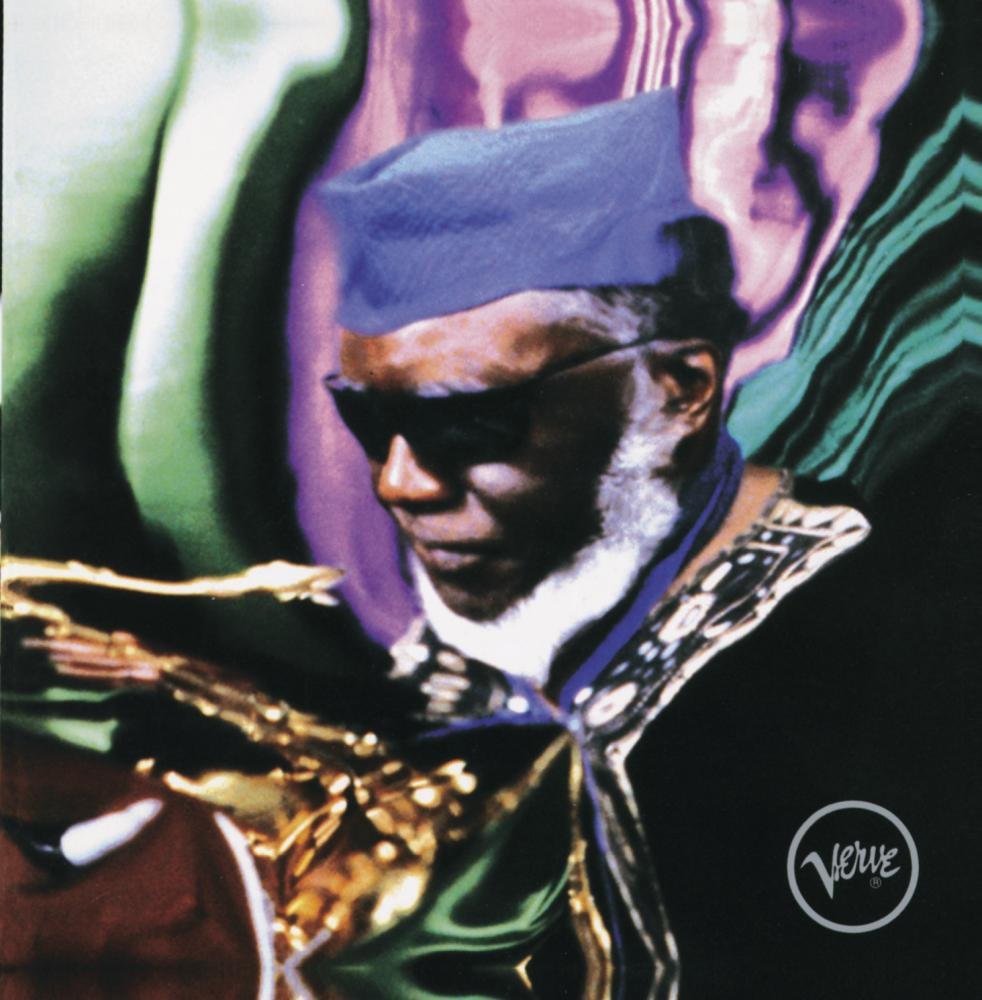
Pharaoh Sanders, Message from Home.
Very nice, relaxing..


On vinyl...

On vinyl...

Now Playing......

Robert Plant - Mighty Rearranger
Starting the day with a little bit of Robert Plant, warming up for a listen to his latest album 'Carry Fire.'

Transcriptions of Bach's Chaconnes from the Partita for solo violin in D minor Bwv 1004 by three composers, as well as a timeless interpretation of the original.
Charles Lloyd - Forest flower
With Keith Jarrett on piano.

From allmusic.com:
When Charles Lloyd brought his new band to Monterey in 1966, a band that included Keith Jarrett on piano, Jack DeJohnette on drums, and the inimitable -- though young -- Cecil McBee on bass, no one knew what to expect. But they all left floored and this LP is the document of that set. It is difficult to believe that, with players so young (and having been together under a year), Lloyd was able to muster a progressive jazz that was so far-reaching and so undeniably sophisticated, yet so rich and accessible. For starters, the opening two title tracks, which form a kind of suite (one is "Forest Flower-Sunrise," the other "Sunset"), showcased the already fully developed imagination of Jarrett as a pianist. His interplay with DeJohnette -- which has continued into the 21st century in a trio with Gary Peacock -- is remarkable: whispering arpeggios surrounded by large chords that plank up the drumming as DeJohnette crosses hands and cuts the time in order to fluctuate the time. Lloyd's own solos are demonstrative of his massive melodic gift: his improvisation skirted the edges of what was happening with Coltrane (as everyone's did), but his own sense of the deep wellspring of song and the cross-pollination of various world musics that were happening at the time kept him busy and lyrical. Elsewhere, on Jarrett's own "Sorcery," his linking front-line harmonics with Lloyd is stellar -- this isn't communication, it's telepathy! Jarrett's angular solo is buoyed up by Lloyd's gorgeous ostinato phrasing. By the time the band reaches its final number, a sky-scorching version of Brooks Bowman's "East of the Sun," they have touched upon virtually the entire history of jazz and still pushed it forward with seamless aplomb. Forest Flower is a great live record.
great recital recorded in Rome 2014...
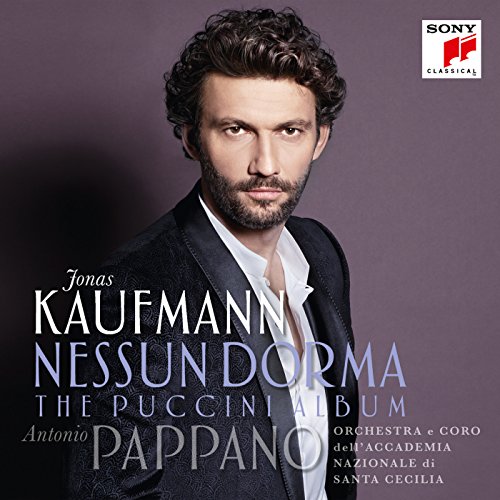
Bach: Magnificat, Missa in F
John Eliot Gardiner & the Monteverdi Choir

 Beck - Colors on Tidal
Beck - Colors on Tidal
Why might anyone be interested?
There. Is. A. New. Beck. Album FFS!

